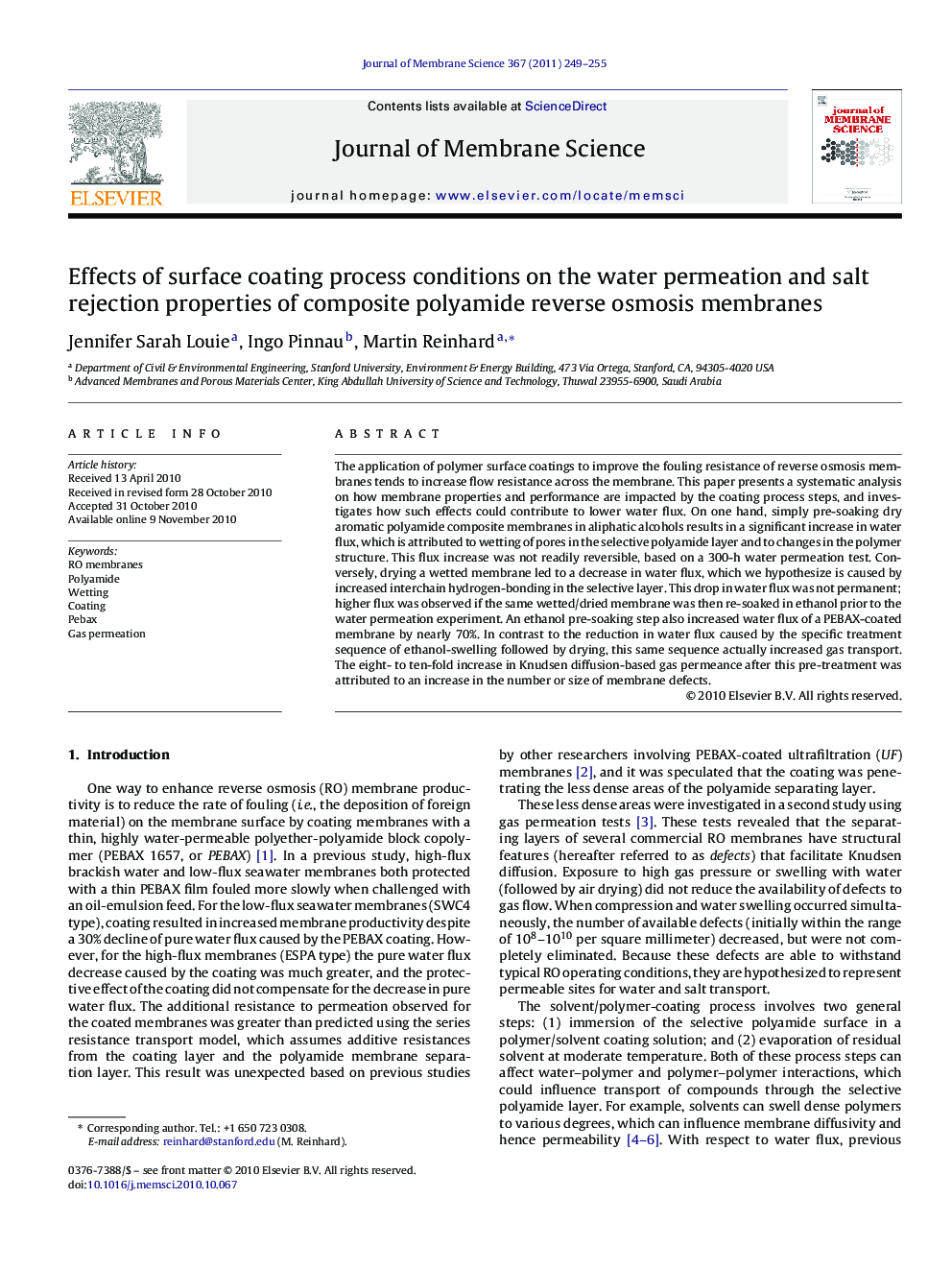| کد مقاله | کد نشریه | سال انتشار | مقاله انگلیسی | نسخه تمام متن |
|---|---|---|---|---|
| 636036 | 1456112 | 2011 | 7 صفحه PDF | دانلود رایگان |

The application of polymer surface coatings to improve the fouling resistance of reverse osmosis membranes tends to increase flow resistance across the membrane. This paper presents a systematic analysis on how membrane properties and performance are impacted by the coating process steps, and investigates how such effects could contribute to lower water flux. On one hand, simply pre-soaking dry aromatic polyamide composite membranes in aliphatic alcohols results in a significant increase in water flux, which is attributed to wetting of pores in the selective polyamide layer and to changes in the polymer structure. This flux increase was not readily reversible, based on a 300-h water permeation test. Conversely, drying a wetted membrane led to a decrease in water flux, which we hypothesize is caused by increased interchain hydrogen-bonding in the selective layer. This drop in water flux was not permanent; higher flux was observed if the same wetted/dried membrane was then re-soaked in ethanol prior to the water permeation experiment. An ethanol pre-soaking step also increased water flux of a PEBAX-coated membrane by nearly 70%. In contrast to the reduction in water flux caused by the specific treatment sequence of ethanol-swelling followed by drying, this same sequence actually increased gas transport. The eight- to ten-fold increase in Knudsen diffusion-based gas permeance after this pre-treatment was attributed to an increase in the number or size of membrane defects.
Research highlights▶ Ethanol soak increases membrane water flux, hypothesize polymer structure changes. ▶ Drying a wet membrane decreases water flux, thought to increase interchain H-bonding. ▶ Ethanol soaking/drying increases gas transport, number/size of membrane defects. ▶ Water flux of ethanol soaked/dried membrane partly restored by second ethanol soak.
Journal: Journal of Membrane Science - Volume 367, Issues 1–2, 1 February 2011, Pages 249–255